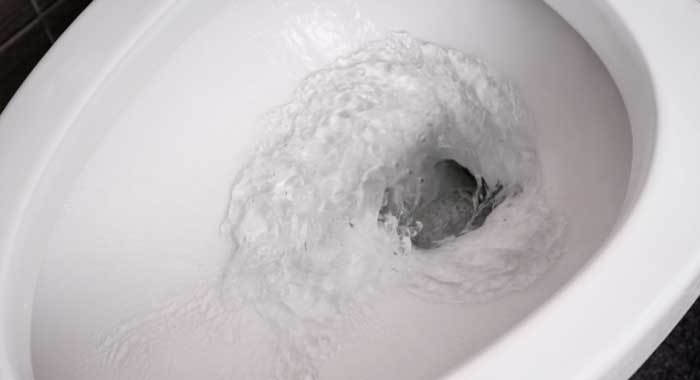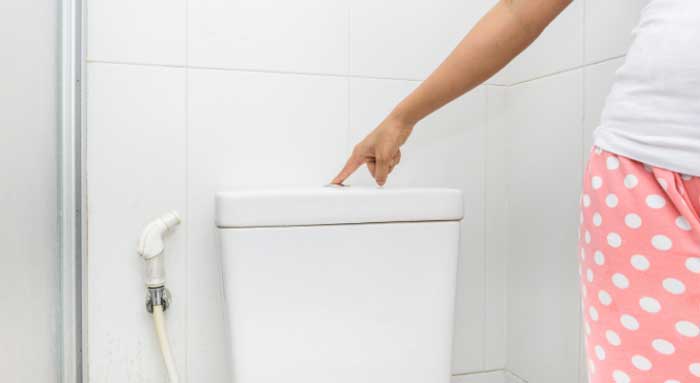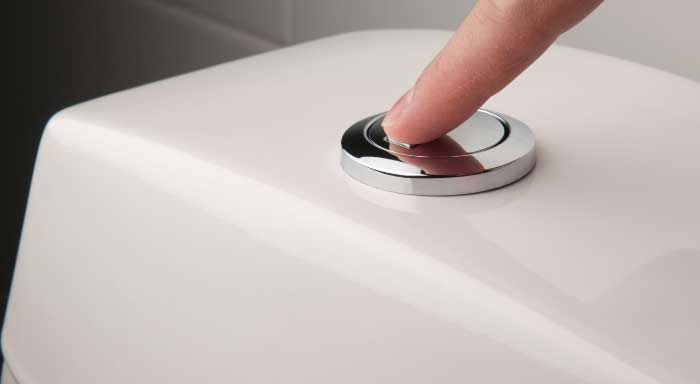When you are buying a toilet, there are many things that matter besides price. In fact, before you open your wallet, the first thing you need to ask is ‘Will the toilet flush effectively?’ After all, no one wants their toilet bowl looking soiled at the end of their business.
And when it comes to toilet efficiency, only one thing matters-The flushing system. There are many of them and each has its pros and cons. In this article, we are going to enlighten you about all the most common flushing systems available in the market. This way, you can decide which one strikes the right balance between price and performance.
Common Toilet Flushing Systems
Here is a list of toilet flushing systems mostly available on the market:
1. Gravity Flush Toilets

Gravity flush toilets date back to the doorknob days when grabbing and turning that handle was fun. In fact, all the recent inventions are simply modified versions of them. Gravity flow toilets push waste out of the bowl through nature’s force of gravity.
So how does that work exactly? Well, it’s a matter of pressure difference. First, the water tank set is placed a bit higher, so water comes down with a lot of force. For a hard and effective push, you can set the water cistern far high.
Once water flows into the bowl, the pressure becomes mightier than that in the trapway and drainpipe. Consequently, waste is forced all the way down like water from a dam whose banks just burst. Unlike in the past, lately, gravity flush toilets sport enlarged valves and better tanks and bowl designs to improve flushing efficiency.
While not extremely effective in populated surroundings, gravity flush toilets are silent, inexpensive, and pretty easy to handle repairs and replacements.
Pros of gravity flush systems
- Timeless simplicity
- Works quietly
- Easy to repair and replace
Cons
- Can clog easily especially commercial settings
- Possible sweating
2. Pressure-assisted Toilets
Pressure-assisted toilets are an attractively irresistible option for those who want waste done with once and for all. These toilets do away with the weaknesses inherent in gravity flush systems.
Besides the gravitational force, pressure-assist systems also use pressure to eject human waste. Their design features a pressure vessel inside the water cistern where water mixes with pressure. Once released, water comes out intensely sweeping all waste with it all the way to the drainpipe.
Because of the intense force, pressure-assist toilets tend to be loud and this can be unsettling for many people, including older folks and toddlers. Nevertheless, they get the work done pretty nicely, and the bowl will always be cleaner. Additionally, maintenance is rare as pressure-assisted systems make the best no-clog toilets.
One thing to note; the efficiency of pressure-assist toilets depends on the pressure from your water connection. So if you see the toilet lagging, then your water pressure needs some boost.
Pros of pressure-assist toilets
- Powerful and effective flushing
- Low maintenance
Cons
- Very loud
3. Single-flush System
There is no point in wasting water when some parts of a country are grappling with water shortage, right? To curb this some toilets come with dual flushing toilets that allow you to use different amounts of water for solid and liquid waste.
However, single flush toilets have only one setting that allows them to flush solid and liquid waste using the same amount of water. For some people (actually most), this can lead to water wastage because liquid waste does not need the same amount of water as solid. The good news is, the latest models use at most 1.6GPF, which is the recommended amount.
In a single flush toilet, you’ll find them having a handle, which is attached to a chain lift that in turn is linked to the flapper valve. Now when you pull the lever, the chain will flip open the flapper releasing water into the bowl.
Single flush toilets use gravity flush systems and thus run quieter than their pressure-assisted companions.
Pros of single-flush systems
- Flushes silently
- Affordable
Cons
- Not always water economical
4. Dual-flush Toilets

Dual flush toilets are the opposite of single flush systems. They possess dual options for flushing liquid and solid waste. For instance, if you find a toilet marked as 0.8/1.3GPF, it means the minimum flush (preferably for liquid waste) uses 0.8 gallons per flush while the maximum flush (mostly for solid waste) uses up to 1.3 gallons per flush.
Dual flush toilets flushed through a siphon action and powered through pressure or gravitation force. A plunger will push water into a siphon tube from where it flows into the bowl during a full flush. However, during a partial flush, the plunger will be pushed partly introducing air that stops all the water from being sent through the siphon tube.
While dual flush toilets are excellent at saving water, cheap ones will be nothing but trouble. Instead of a single flush, you’ll do it several times, which beats the whole idea of cutting down on water consumption. You can check out our list of the most efficient dual flush toilet reviews for dependable models.
Pros dual-flush toilets
- Saves water
- An acceptable model in many countries
Cons
- Can cost a lot
5. Washdown Toilet System
A washdown toilet might be in your home, but you just don’t know it. The trapway is usually as big as 4 inches in this design compared to those with 2 inches. The bowl opening is also quite wider. This combination results in toilets that flush pretty fast, furiously, and effectively.
Wash down toilets are normally part of dual flush systems with impressive water-saving features.
Pros of washdown toilets
- Doesn’t clog easily
- Low maintenance
Cons
- Fairly noisy
6. Double Cyclone/Tornado Flush System
Double cyclone aka Tornado flush is ToTo’s unique and powerful flushing system that is available for their medium to high-end toilets. In this system, toilets are fitted with two holes on either side of the bowl for letting in water through a centrifugal rinsing action.
Pros of double cyclone
- Powerful flushing action
- Fairly quiet
- Less water usage
Cons
- Some are costly
7. Vacuum Assist Toilets
One of the latest inventions in the toilet industry is the vacuum flush. In this system, a vacuum tank is connected to the trapway drain pipe, and when you pull the handle, water flow creates a suction force that pulls the waste out of the bowl and into the drainage.
Vacuum flush toilets are extremely impressive, easy to maintain, and stylish. However, there are not many buying options out there, and the few available tend to cost a lot.
Pros of vacuum-assist toilets
- Efficient flushing
- Easy to maintain
Cons
- Costly
- Limited buying options
8. Flapper-flush Valve-Flush system
This is a part of most toilets found in homes. In this system, a flapper valve seals the opening in the water tank and is usually connected to the flushing handle through a chain. Now when you pull the handle, the flapper detaches letting water out of the tank and into the bowl.
While flappers are efficient, they tend to need repairs, and their designs vary from one toilet to another.
Pros of flapper-flush valve-flush system
- Easy to find replacement parts
- Mostly found in affordable toilets
Cons
- Hard water impairs it with time
Ways to Make Your Toilet Flush Stronger

Along the way, your toilet is going to start flushing ineffectively leaving behind unsightly waste and smells that make it impossible to use your bathroom. At this point, you need to schedule maintenance to ensure you don’t have to deal with toilet downtimes.
If you use a pressure-assist toilet, you must ensure the water flowing in your house has enough force to squeeze waste out. Secondly, try to use soft water as hard water affects not only the flapper valve but the drainage pipes as well.
Last but not least, the only way to ensure your toilet runs smoothly and needs minimal repairs and maintenance is by spending a little more. Frankly, we get what we pay for, and the best flushing toilets don’t come cheaply. So before you penny-pinch, ask yourself this; are you willing to deal with frequent clogs? We know you don’t.
Wrap Up
There you have it- a whole list of all the different types of toilet flushing systems. So which one are you going to go for? Well, don’t tell us. What we can insist on is this; make sure you pick a choice that meets your needs precisely.
Commercial businesses should mostly rely on pressure-assist or double cyclone systems that effectively drain waste. This is because the toilets get used frequently, and it would be an eyesore to have to stare at the human waste. Besides, better flushing means healthy working surroundings and less maintenance.
Those with small homes can benefit from advanced yet affordable gravity flow toilets, double cyclones, and other fairly silent flushing systems. Take a look around our website for some economical, medium, and high-end toilet types. All in all, we wish you good luck during your next purchase.
Related Resources:

